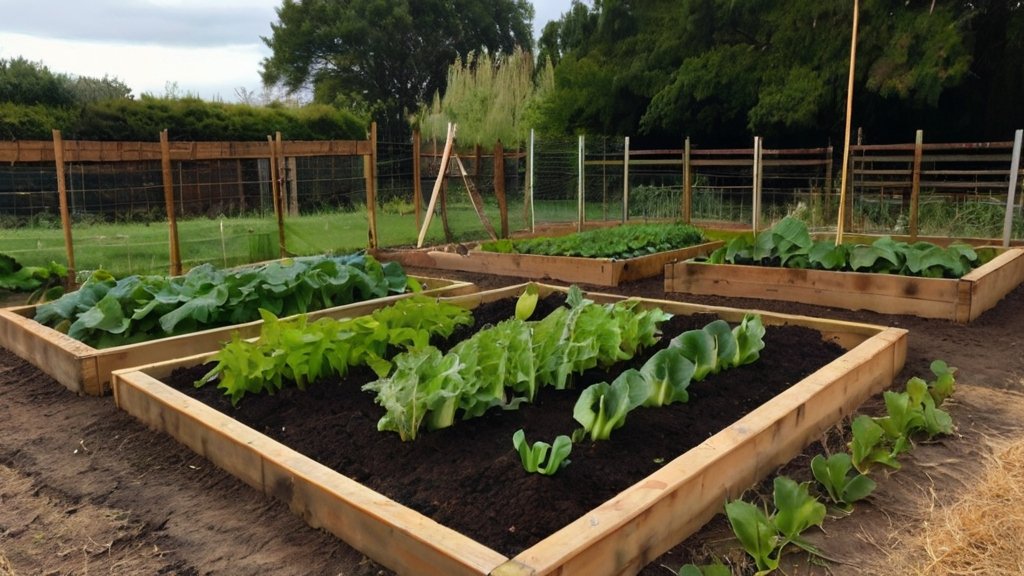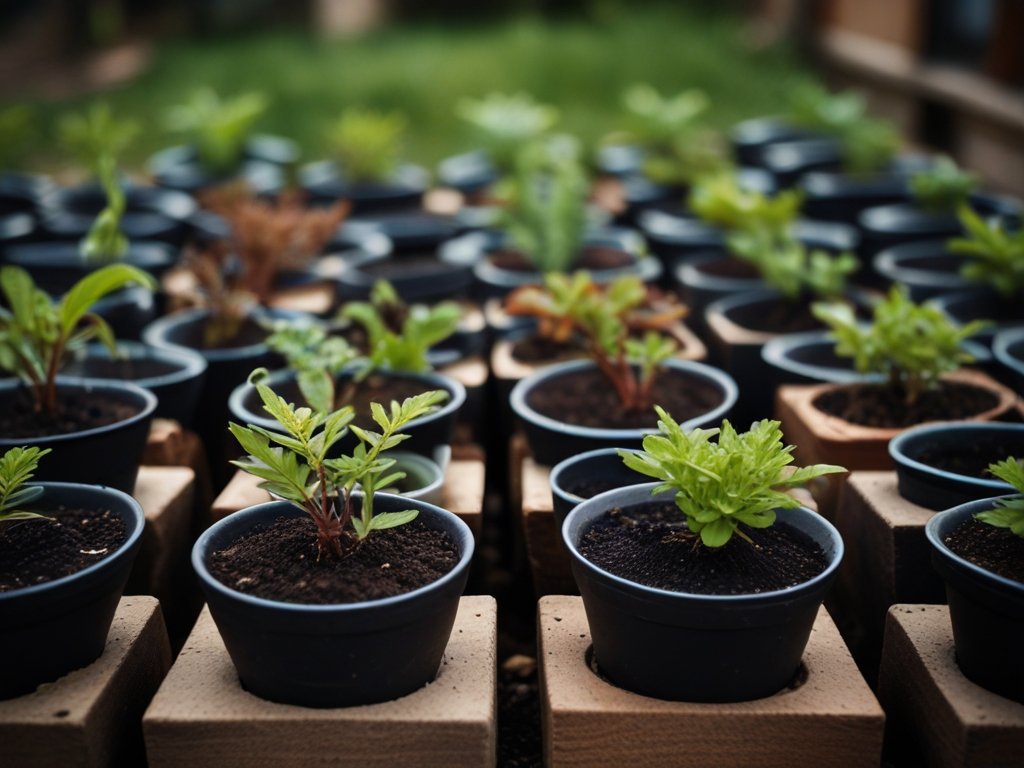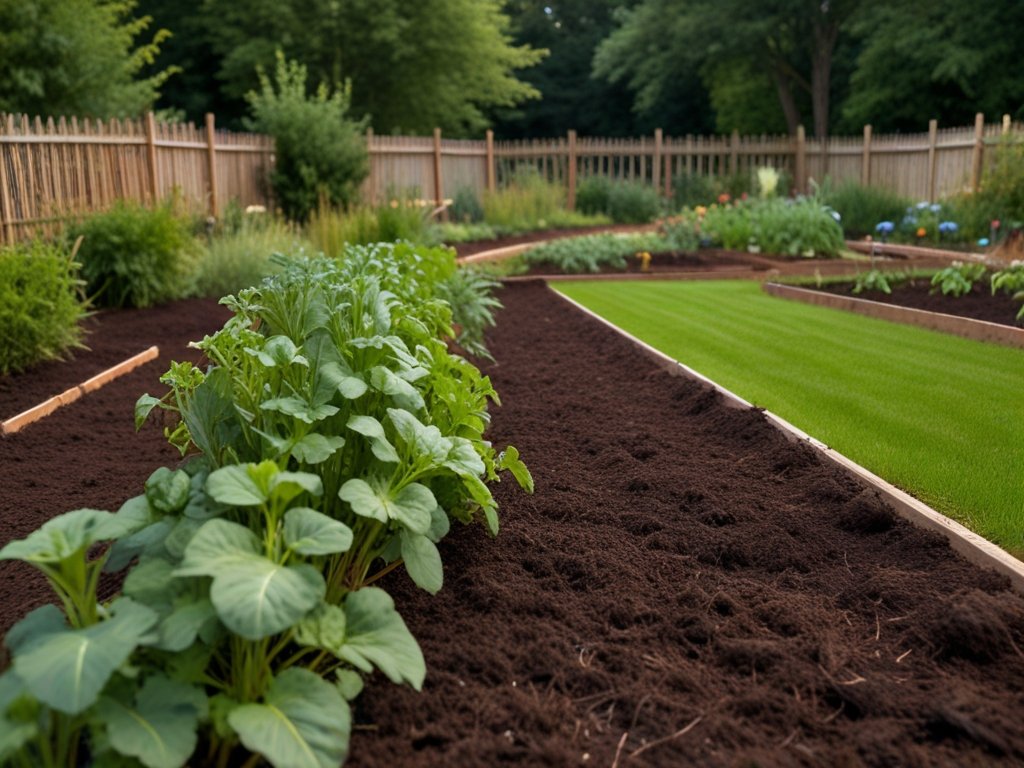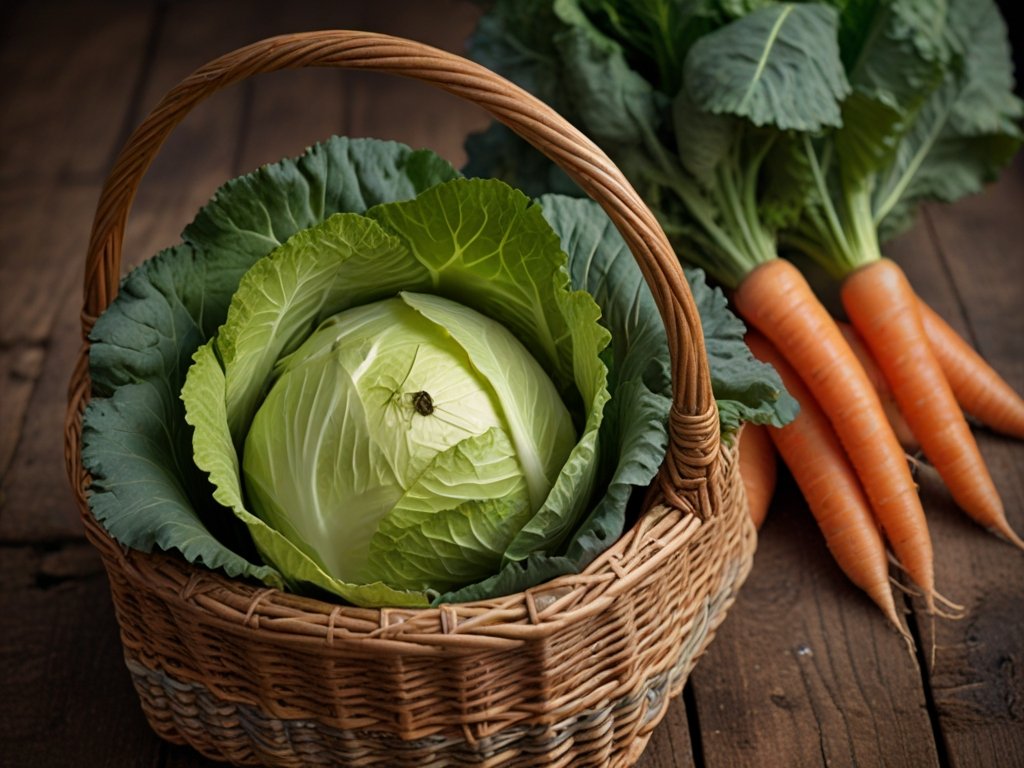Do you want to enjoy fresh and healthy vegetables from your own garden? Do you want to save money and reduce your environmental impact by growing your own food? If so, starting a vegetable garden from scratch might be the perfect project for you.
A vegetable garden can provide you with a bounty of delicious produce that you can harvest throughout the seasons. You can also customize your garden to suit your preferences, space, and climate. However, starting a vegetable garden from scratch can also be a daunting task, especially if you have never gardened before. Don’t worry, though. With some planning, preparation, and patience, you can create a successful and sustainable vegetable garden from scratch. Here are some steps to guide you through the process.
Choose The IDEal Spot to Grow Your Vegetables
The first step to starting a vegetable garden from scratch is to find a suitable spot for it. For some of us with small gardens you may well only have one option but if you do have a choice of areas choose somewhere that gets several hours of direct sunlight per day, has well-drained soil, and offers some protection from strong winds.
If you have a decent sized area, you may choose to build raised garden beds to grow your vegetables in whereas if you only have a limited space, you can make the most of it by growing vegetables in pots, hanging baskets, or vertical planters. Once you have chosen your location the next step is to plan your garden layout and choose which crops you intend to grow.
Planning Your Garden
When starting your vegetable garden, you will need to decide how you will arrange your garden and what crops you will grow. You want to maximize your space, productivity, and diversity, while minimizing your maintenance and problems. To do this, you need to consider the following factors:
- The shape and size of your garden.
- The climate of your area.
- The growth habits and requirements of your crops
- Your companion planting and crop rotation plans.
- Pest and disease resistance and prevention strategies.
- The quality and pH of your soil.
To help you design your garden layout and select your crops you can research online or find ideas from gardening books or magazines. You can also ask for advice at your local nurseries or garden centres.
It’s a good idea to start small and simple. Choose a few easy and reliable vegetables that you like to eat and that suit your climate and season. Once you have successfully grown your first crops you can always expand and diversify your garden later.
Choose how you plant your vegetables. You may decide to plant in rows or blocks and you should consider intercropping where you grow a second type of crop between the rows of the first one. This will help you make the best use of your limited space and increase the number of different varieties you can grow. One common method is to plant a slow growing crop next to a fast growing one. Slow growing ones will take a long time to fill the soil around them so there will be free space for a long period of time. Another possibility is to use relay cropping where you plant your second crop close to the initial one a few weeks before you intend to harvest it. The advantages to this are that it limits weed growth and may lower risks of pests. It makes better use of the area and the fertilizers that have been used saving money and time. You do have to take extra care when harvesting the first crop not to damage the younger plants.
When you plan your garden, it is a good idea to group together crops that have similar needs regarding their needs for water, fertilizer and sun. This will help you provide the best conditions for them and save both time and resources.
You should also plan a variety of crops that take different lengths of time to mature. Alternatively, you can spread out your planting of each crop over a period which will extend the harvesting time. Both methods will give you fresh vegetables for longer.
Each year rotate your crops, so the same ones are not planted in the same patch as the year before. A three or four year rotation is a good idea. Growing the same crops year after year will remove nutrients from the soil and make pests and diseases more likely. Once you decide the range of vegetables you wish to grow you can plan how you intend to rotate them. Divide all the vegetables into similar groups to ensure you rotate to a totally different type. For example, crop rotation wouldn’t be effective if you rotate between cabbages and cauliflowers which are both from the brassica family of plants. Next you need to prepare your beds and soil ready for planting.
Prepare your Beds and Soil
Are you going to plant directly into the soil or build some raised vegetable beds? If you decide on beds, you can build these from a variety of materials including wood, bricks, stones, metal, or plastic. Personally, I think the timber ones look good and are easy to build in a short period of time.
Your next step is to prepare your soil for planting. The soil is the most important factor in making your garden successful so now is the time to ensure it is in top condition. To start you should test your soil using a kit you can buy from most garden centres. This will show you the pH of your soil and its level of nutrients. Once you know this you can choose suitable crops or adjust your soil to the state needed for the ones you want to grow. To alter your soil, you can add organic matter, such as compost, manure, or mulch, to improve your soil’s structure, fertility, and water retention. You can also add lime, sulphur, or fertilizers to balance your soil’s pH and nutrient levels.
After you have improved your soil, it is time to start to plant your crops.

Plant your seeds and seedlings.
The fourth step to starting a vegetable garden from scratch is to plant your seeds and seedlings in your prepared beds. Seeds and seedlings are the young plants that will grow into mature vegetables, and you want to make sure you sow them at the right time, depth, and spacing.
First look at your seed packets or the labels to your young plants. They will tell you when, how, and where to plant your seeds and seedlings, as well as how to care for them afterwards.
You can start your seeds indoors and transplant them later or sow them directly in your garden. You want to make sure you sow them at the appropriate depth and cover them lightly with soil. You also want to make sure you sow them at the proper spacing, usually indicated on the seed packet and thin them out later if needed.
Seedlings can be bought from a nursery or grow your own from seeds. You want to make sure you plant them at the same depth as they were in their pots, and gently press the soil around them. You also want to make sure you plant them at the recommended spacing, usually indicated on the plant label and stake or support them if needed.
Once you have planted your crops all you have to do now is maintain and care for your garden.

Caring For Your Garden.
The fifth and final step to starting a vegetable garden from scratch is to care for your garden throughout the growing season. Caring for your garden involves watering, weeding, mulching, fertilizing, pruning, harvesting, and protecting it from pests and diseases.
Water your garden. Generally, you want to water your garden regularly and deeply, especially during dry spells. This will keep your soil and plants moist but not soggy. It is best also to water your garden in the morning or evening, to avoid evaporation and scorching, using a soaker hose, or watering can.
Weed your garden. You want to weed your garden frequently and thoroughly, to prevent weeds from competing with your crops for space, nutrients, and water. It is best to weed your garden by hand or use a hoe. Do not use any chemicals near your crops to kill weeds.
Mulch your garden. You want to mulch your garden with organic materials such as straw, leaves, grass clippings, or wood chips, to suppress weeds, retain moisture, regulate temperature, and enrich your soil. Add mulch to your garden after watering or weeding to cover the bare soil. Leave some space around the base of your plants, to prevent rotting or attracting pests.
Fertilize your garden. You can fertilize your garden with organic or synthetic fertilizers, to replenish your soil’s nutrients and boost your crops’ growth and yield. You should always follow the instructions on the product label when fertilizing your garden to avoid overfeeding or burning your plants. Apply it to the soil or foliage, depending on the type of product you are using.
Prune your garden. You should prune your garden with sharp and clean tools, to remove dead, diseased, or damaged parts of your plants and improve their shape, health, and productivity. Make sure you prune your garden at the right time depending on the type of plant and the purpose of pruning. Dispose of the pruned materials properly, to prevent disease spread or encouraging pests.
Protect your garden from pests and diseases. You should protect your garden from pests and diseases, to ensure your crops’ survival and success. This is best done using natural or organic methods, such as crop rotation, companion planting, traps, barriers, regular weeding and pruning, or non-chemical sprays, to avoid harming your plants or the environment.
Harvest your garden. You should harvest your garden with care and caution, to avoid damaging remaining plants and encourage more production. Harvest your garden at the right time, depending on the type and variety of vegetable to maximise both the quality and quantity of your crops. Remember to store and preserve your harvest properly, to extend its shelf life. After all the efforts you have made to grow your crops, you don’t want them to rot before you eat them due to poor storage.

In this article, we have covered the basic steps to start a vegetable garden from scratch. We have explained how to plan your garden, prepare your soil, choose your crops, plant your seeds or seedlings, water and mulch your garden, protect your garden from pests and diseases, and harvest your garden. By following these guidelines, you can enjoy the benefits of growing your own food, such as saving money, eating healthier, reducing waste, and having a rewarding and fun time. We hope you have found this article helpful and informative, and we wish you a successful gardening experience.
